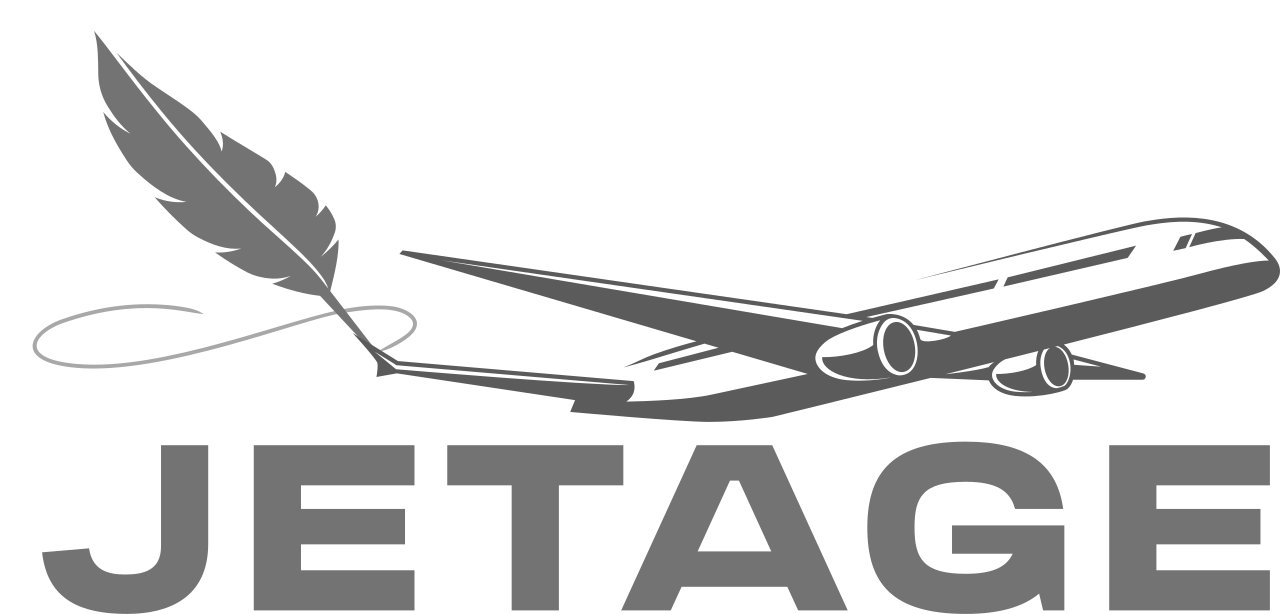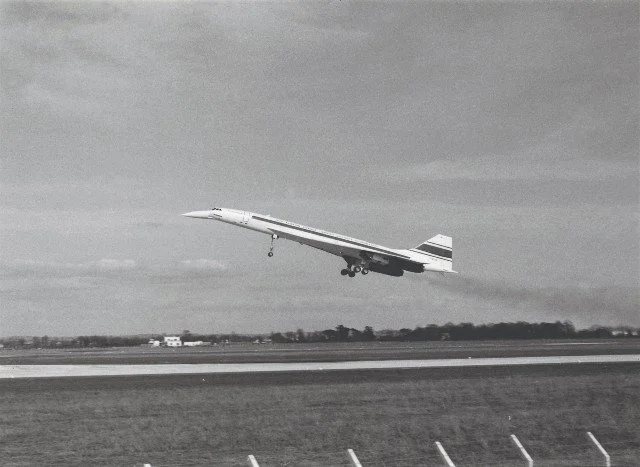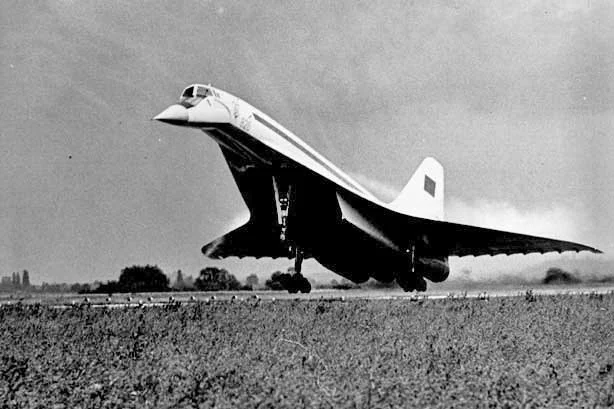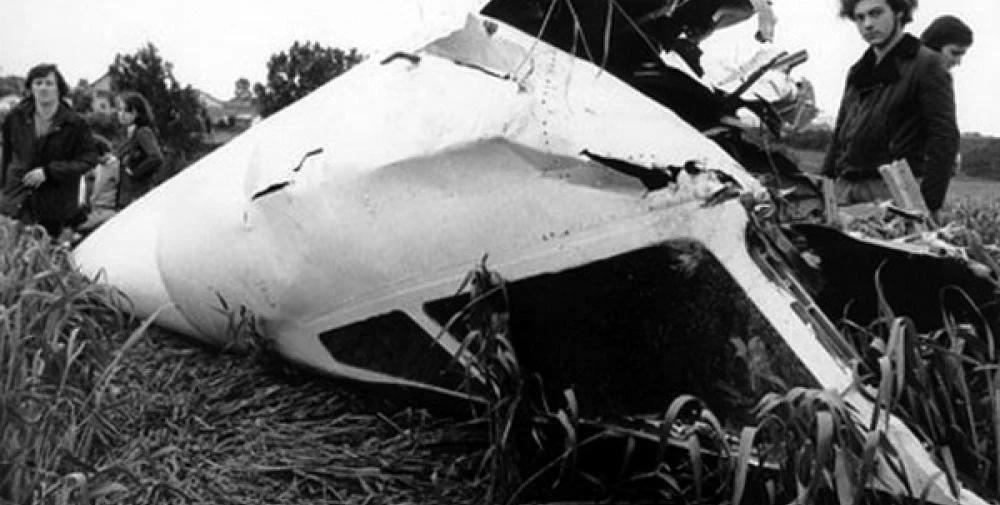Behind the Iron Curtain: The Tu-144 and the Price of Parity
Contrary to popular belief, the Concorde wasn't the first and only supersonic passenger aircraft. The Tupolev Tu-144 beat the Concorde into the skies and shared the supersonic title with it
“From Stettin in the Baltic to Trieste in the Adriatic, an iron curtain has descended across the Continent”. When these words were preached by Churchill in March 1946 at Westminster College, Missouri, the world had barely begun to recover from the ashes of war. Just ten months earlier, the Third Reich had fallen, Nazi Germany was no more, and Hitler was dead. The marriage of convenience that had brought the Soviet Union and the West together was broken. The glue that had held them through a shared enemy dissolved almost overnight, revealing a new, colder battlefield. One where ideology replaced diplomacy, and prestige became a weapon.
This was the dawn of the Cold War. And in this new age, power was no longer just measured in territory or armies, but in symbols. Satellites, missiles, and a desperate attempt to assert each side’s technological supremacy. Aircraft that could tear through the sky faster than sound itself was no exception.
The Iron Curtain speech made it official: Europe was no longer united, but divided, and torn between capitalism and communism. The wartime alliance was over, and any illusion of cooperation had vanished
In the decades that followed the infamous Iron Curtain speech, the Cold War ignited a rivalry unlike any before it. One fought not on battlefields, but in laboratories, launchpads, and cockpits. The United States and the Soviet Union vied for dominance in a world newly defined by innovation, where every invention was a statement of ideological superiority, a parade of national pride. In 1957, the Soviet Union stunned the world by launching Sputnik 1, the first artificial satellite, followed just weeks later by the successful test of the R-7 Semyorka, the world’s first intercontinental ballistic missile. The US responded with the creation of NASA in 1958, and by 1961, the Soviets struck again with Yuri Gagarin, the first human in space. The pace was relentless. Technology became the theatre of war, and every “first”, the first satellite, the first jetliner, the first man in space, was a trophy in a high-stakes contest to prove which system, capitalist or communist, could command the future.
The Soviets beat the world in sending the first human, Yuri Gagarin into space
So, in 1962, when Britain and France began a joint endeavour to create a commercial airliner that could travel at twice the speed of sound, it was a direct challenge to the Soviet Union. They set out to create what would become one of the most iconic aircraft to grace the sky: The Concorde. Supersonic travel was more than a plane flying fast. To fly passengers faster than sound meant shrinking the globe, turning oceans into ponds and continents into islands. It’s worth reminding that development of the Concorde began less than a decade after the maiden flight of the de Havilland Comet 1, the first ever jet powered commercial airliner. In under ten years, civil aviation had leapt from tentative jet travel to chasing the edge of supersonic speed, a pace of innovation that, in any other era, might have spanned a generation. It was the physical manifestation of progress, ambition, and the belief that the future could be sculpted by engineering.
The Concorde would, amongst being a showcase of Western technology and engineering, also be a visual manifestation of Western cross-border cooperation. Thus, for the Kremlin, the Concorde would not be seen merely as another plane, but as a provocation. A shiny spearhead of capitalist pride piercing the Eastern bloc's image of progress. It was imperative that the Soviet Union did not fall behind, for in the eyes of the world, a lag in progress would be tarnishing on the entire communist ideal.
Concorde flew its maiden flight in March 1969
Faced with this looming challenge, the Soviet Union responded with characteristic urgency. The task of creating a supersonic airliner to rival the West was handed to Tupolev, the state’s trusted aircraft design bureau. What followed was a high-pressure race against time to preserve the image of communist prowess. The result was the Tupolev Tu-144, a machine born not out of market demand or engineering maturity, but out of ideological necessity and geopolitical pressure. It would go on to break records, and soon after, shatter expectations in ways the Soviets never intended.
Development of the Concorde began long before the Soviet announcement of the Tu-144. The British government had established the Supersonic Transport Aircraft Committee (STAC) to explore the feasibility of supersonic passenger flight in 1956, with Britain and France beginning informal talks to merge their efforts in 1961. The Tu-144’s design work started after this point, as a direct reaction to the Concorde.
Through an extensive campaign of espionage, the Soviets acquired over 90,000 confidential documents detailing the development of Concorde, validated by archives from defected KGB archivist Vasili Mitrokhin. This trove of stolen blueprints and technical data gave Soviet engineers a crucial head start, effectively allowing them to shortcut years of research and development (R&D), and piggyback off Western innovation. It was through this that the Tu-144 was able to claim the title of the first supersonic commercial airliner, with maiden flight on 31 December 1968, two months before Concorde took off. But while the Tu-144 won the race for take-off, and may have looked like Concorde on the outside, beneath the surface it was a different story. The development was rushed, forced to catch up with political ambition. And in the years to come, that haste would prove fatal, both for the aircraft and for those who placed their trust in it.
The Tu-144 flew its maiden flight in December 1968. Visually, strikingly similar to the Concorde
On paper, the Tu-144 held the edge. It was larger and faster, reaching speeds of Mach 2.15 compared to the Concorde’s Mach 2.04. But beyond the specs, the story shifted. Concorde was able to sustain supersonic speeds even after its engine afterburners were switched off, whereas this was not possible for the Tu-144. This meant that in every stage of flight, it was insufferably uncomfortable and intolerably loud, both for those on board and those who were 60,000ft below on the ground. So loud in fact, that passengers were forced to communicate by passing handwritten notes, owing to the deafening roar of its engines. It was a far cry from the Concorde, where the experience was crafted to evoke luxury and exclusivity. While Concorde passengers sipped champagne at 60,000 feet, the Tu-144’s guests endured a ride that felt more like a test of endurance than a premium journey.
Operationally, the Tu-144’s wings were clipped from the start. It only flew one commercial route, from Moscow to Almaty, and even that only once a week. Its crippling reliance on afterburners for sustained flight meant long-haul travel was out of the question; fuel and operational efficiency plummeted the moment it left the tarmac. The Concorde by contrast, graced the skies over New York, Washington D.C., Barbados, and even Singapore, just to name a few. Geography was another silent adversary for the Soviet jet. Owing to the vast size of the Soviet Union, the Tu-144 had to fly over land, subjecting its towns and villages to its roar. The Concorde’s transatlantic routes allowed it to soar above oceans, where its sonic booms hit the water below, not the walls of homes.
The nail in the coffin for the Soviet Union’s supersonic endeavour was marked with tragedy. A catastrophic crash at the 1973 Paris Air Show, witnessed by the world, and another in 1978 over Yegoryevsk, sealed the Tu-144’s fate. It retired from passenger service just nine days after the Yegoryevsk accident. The aircraft wasn’t just uncomfortable, it was inherently unsafe. The consequences of rushed engineering and politically-driven timelines were laid bare. Corners had been cut, and the cracks, both figurative and literal, were impossible to ignore. The plane’s glaring flaws weren’t lost on its own creators. In fact, the Tu-144’s rare and inconsistent flight schedule was largely due to the lack of confidence that leaders in the Kremlin themselves had in it.
The Soviet Union was reluctant to admit the plane’s design flaws for the first Tu-144 crash, instead blaming external factors to protect its image
Theory tells us that competition drives progress. It fuels innovation, sharpens ambition, and delivers better outcomes for everyone, from engineers in labs to passengers in the sky. But when that competition is no longer about people, and instead becomes a stage for political theatre, a parade of advancement meant to dazzle the world and mask internal fragility, the consequences can be tragic. In the case of the Tu-144, the race to be first overshadowed the need to get it right. In the absence of transparency, scrutiny, and restraint, innovation becomes reckless. And when pride flies higher than prudence, it’s not just machines that fall from the sky, it’s trust, safety, and human lives.






